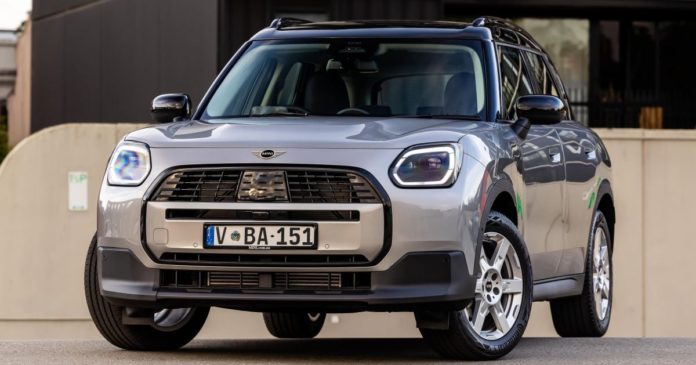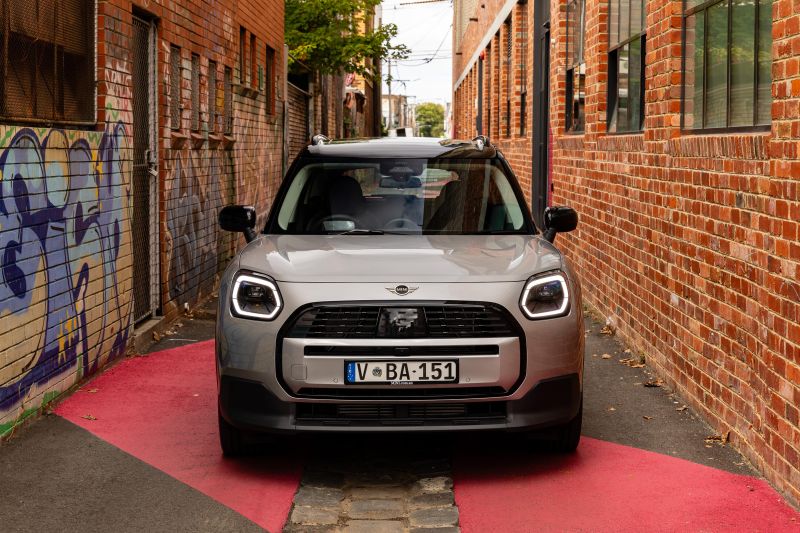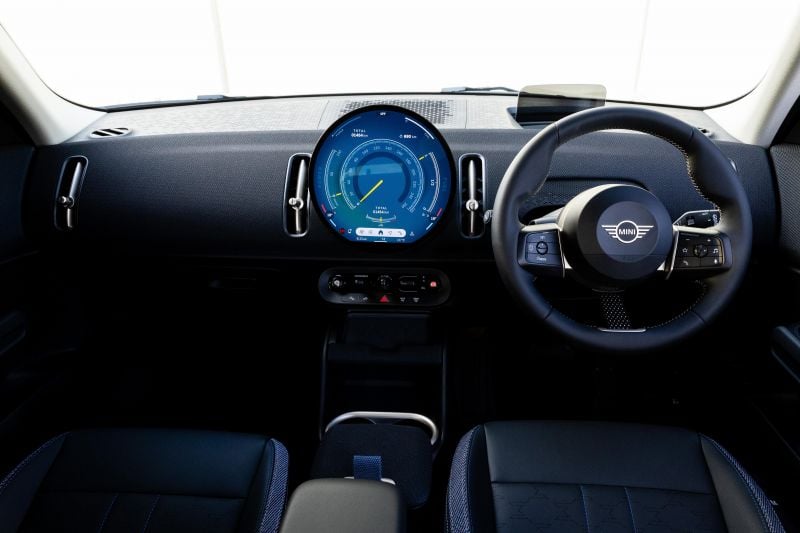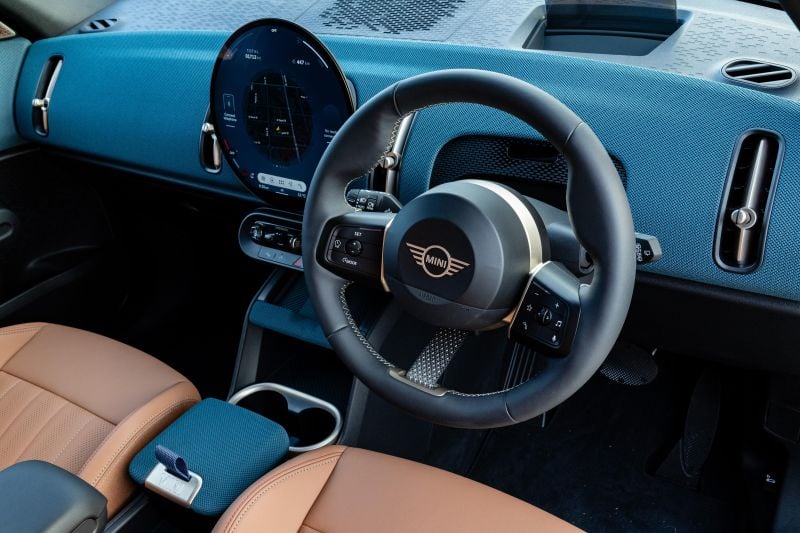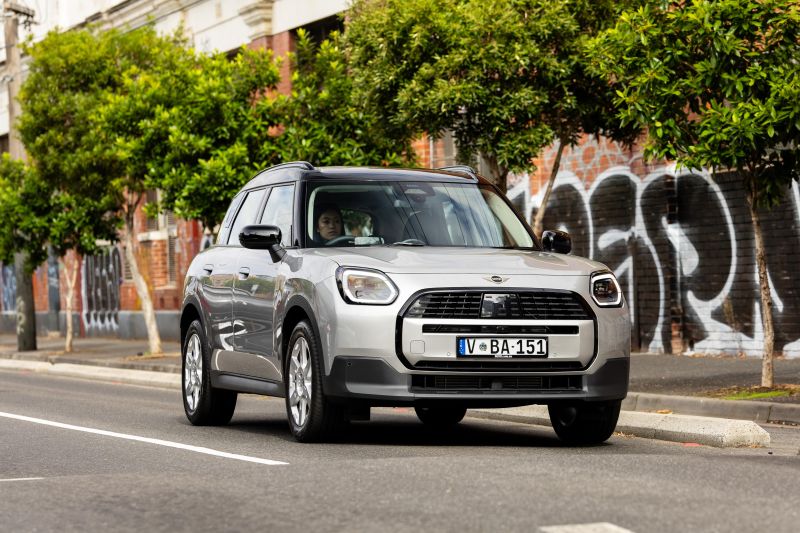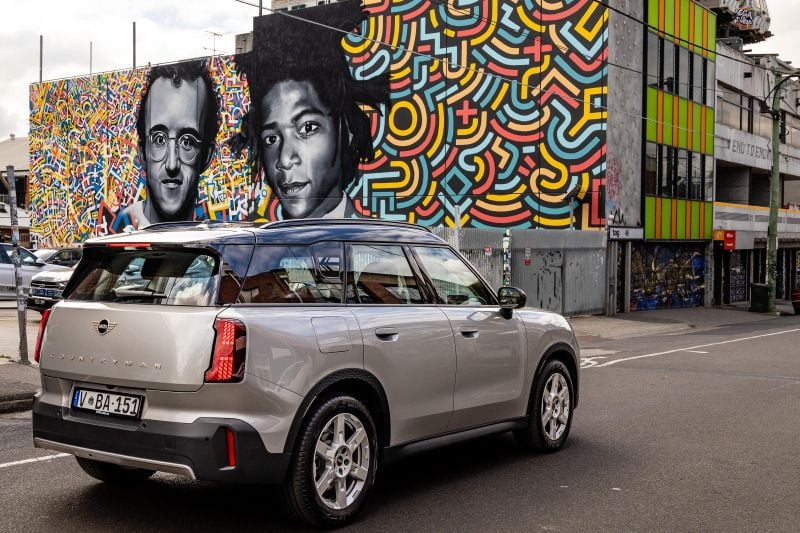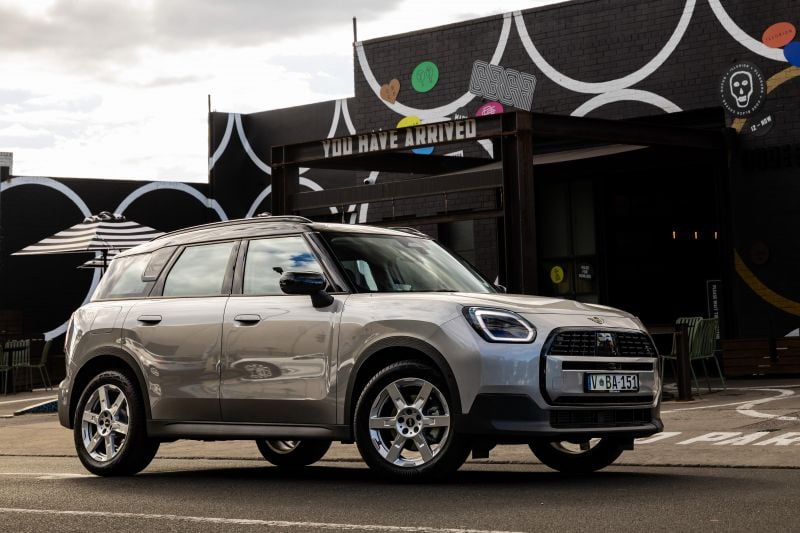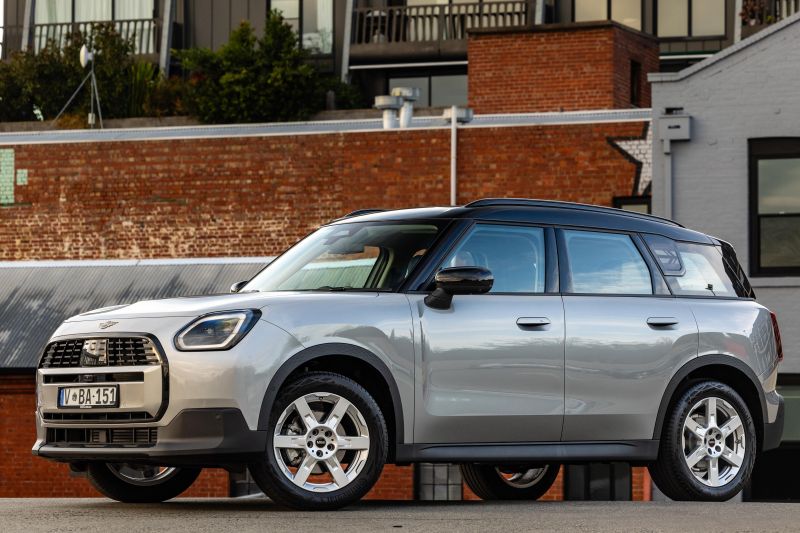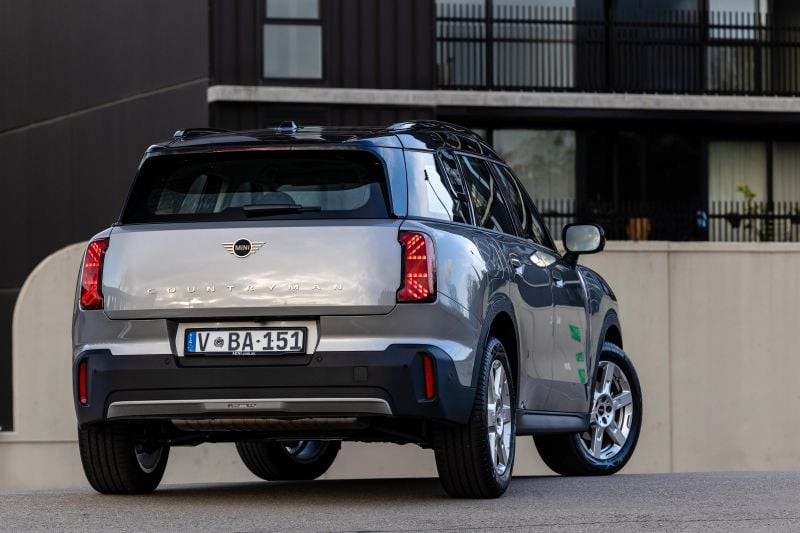One look at the new Countryman is enough to know Mini has its mojo back.
It’s immediately identifiable, but there’s something… different about it. The details are crisper and more confident, for an overall less blobby beast.
There’s more going on here than just an exterior overhaul. Under the skin, the new Countryman rides on a new platform shared with the latest BMW X1 designed to deliver a more grown-up drive than before.
Along with a full suite of driver assists, something sorely lacking in the last model, it features a flashy interior harking back to the first New Mini under BMW ownership and, by extension, the legendary original.
Although it’s possible to have the new Countryman with electric power, the Countryman E and SE haven’t hit Australia yet. Instead, the three-cylinder Countryman C is leading the charge – how does it fare?
How does the Mini Countryman compare?
View a detailed breakdown of the Mini Countryman against similarly sized vehicles.

Mini
Countryman
How much does the Mini Countryman cost?
The Countryman kicks off below $50,000 in Australia, and even the mid-spec Classic on test here is $52,990 before on-roads with a generous list of standard equipment.
| Model Variant | Countryman C | Countryman S |
|---|---|---|
| Core | $49,990 | |
| Classic | $52,990 | $58,990 |
| Favoured | $55,990 | $61,990 |
| JCW Sport | $63,990 |
Prices exlude on-road costs
To see how the Mini Countryman lines up against the competition, check out our comparison tool.
What is the Mini Countryman like on the inside?
Mini has always done interesting interiors, but the new Countryman takes it to the next level.
We often talk about showroom appeal. The giant circular screen combines with some really interesting design details and materials to set this apart from its rivals on first glance, which will immediately win come buyers over at a standstill.
Key brand touch points like the little toggle switches at the base of the dashboard are back for 2024, while the steering wheel has a unique design relative to the BMW X1 alongside which it’s built.
There’s plenty of space up front, with generously padded armchairs for the driver and passenger. Big drivers won’t struggle to get comfortable, and the seating position offers a commanding view over other traffic through the upright windscreen.
Rather than a small car dressed up in SUV clothes, it feels like a more purpose-built crossover.
The circular touchscreen looks cool, but it takes some getting used to. The climate controls, and supplementary gauges are around the edges, while your main infotainment functions are housed in the middle.
BMW deserves credit for putting the effort into making all the graphics and animations unique, and the range of themes for the system are a typically Mini touch. I love the layout that gives you a retro speedo in the middle of the car in particular.
There are some frustrating quirks to the system, though. To unlock the full functionality of the digital assistant, which can be activated using Hey Mini, you need to be signed in to an online account, for example.
It’s not quite on the level of pay-to-play heated seats, but it’s another example of technology holding drivers hostage. This time, Euro NCAP hasn’t even mandated it.
-
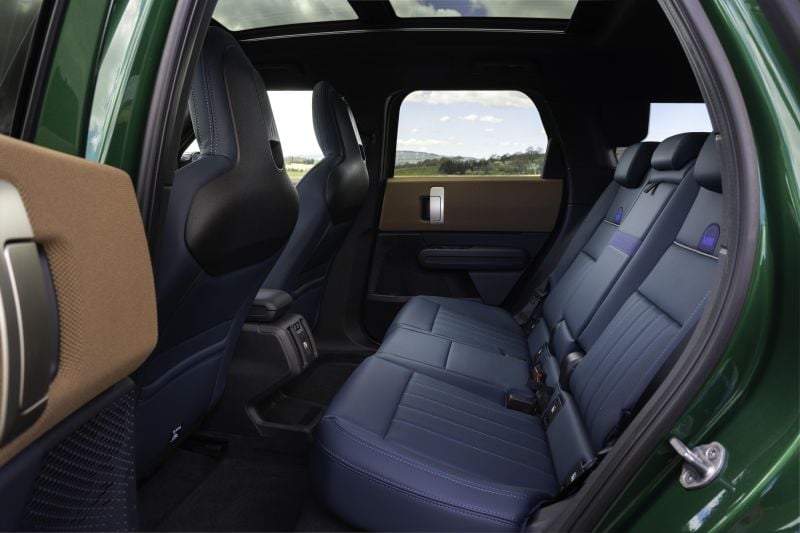
UK model pictured
It can also be hard to work out how to access certain functions, which are buried in the same maze of menus you get in other BMW products, but with an added layer of cutesy obfuscation.
While we’re whinging, the pop-up head-up display hiding behind the wheel where the instrument binnacle would usually sit is cheap and nasty, and is hard to see if you’re awkwardly proportioned. Given this is a brand new car, it’s odd Mini hasn’t gone to the trouble of having it projected onto the windscreen.
Storage space up front is a big leap forward from the last car. There’s no conventional bin between , but you get a little bin between the seats allowing you to hide valuables. You also get cupholders, and spacious door pockets for bottles. A wireless phone charger beneath the dash is backed by dual USB-C ports.
Rear seat space is a significant improvement here relative to the last Countryman. This is a genuinely usable SUV, with space for fully grown adults in the rear… provided the driver isn’t an olympic basketballer.
-

UK model pictured -
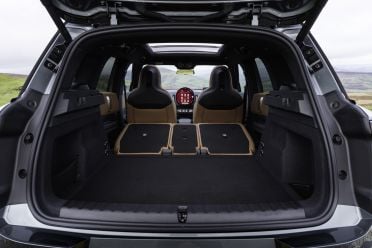
Tall teenagers will be able to get comfortable back there, and there’s plenty of headroom despite the panoramic sunroof on our Classic tester. USB-C ports and air vents feature, as does a fold-down central armrest, and the upright windows make for quite an airy feeling inside.
It’s worth keeping in mind the relatively small rear door opening, however. It’ll make it harder to load a child into a rear-facing seat, and means anyone with limited mobility needs to be a bit more flexible to climb in or out.
ISOFIX points feature on the outboard rear seats, and there’s a trio of top tether points for child seats back there. The bench also slides to free up more boot space.
Mini officially quotes a boot capacity figure of 500 litres, which expands to 1450 litres with the second row of seats folded.
What’s under the bonnet?
The base engine in the Countryman is shared with entry-level versions of the BMW X1 – it’s a punchy little three-pot, making 115kW of power and 230Nm of torque.
| Model | Mini Countryman C |
|---|---|
| Engine | 1.5-litre 3cyl turbo |
| Power | 115kW |
| Torque | 230Nm |
| Transmission | 7-speed dual-clutch auto |
| Driven wheels | Front-wheel drive |
| Weight | 1520kg (kerb) |
| 0-100km/h | 9.0 seconds |
| Fuel economy (claim) | 6.8L/100km |
| Fuel economy (as tested) | 8.2L/100km |
| Fuel tank size | 45L |
| Fuel requirement | 95 RON |
How does the Mini Countryman drive?
There’s no mistaking the engine in the Countryman C for anything but a three-cylinder.
It has a determined, offbeat thrum that buzzes into the cabin when you’re driving around town, but it’s endearing rather than annoying. It’s a pretty willing engine too, with plenty of torque from low down in the rev range to get you up and rolling in traffic.
There’s a hint of hesitation from the dual-clutch transmission off the mark, especially when you have auto start/stop active. It takes a beat to fire the engine and engage, which feels like a yawning break if you’re trying to shoot across an intersection.
Once you’re rolling, the transmission is smooth and smart. Despite its small displacement and middling outputs, there’s always plenty of punch under your right foot to dart into gaps in traffic.
It’s confident enough to hold a gear when you aren’t in a hurry, and kicks down smartly when you need more.
Ride quality is right on the money for a small-ish SUV that isn’t aiming to put the sport in Sports Utility Vehicle.
It floats nicely over pimply city streets, and has a slightly springy feeling that cushions big potholes or speed bumps in a way its predecessor couldn’t.
Combined with light steering, solid visibility through the upright windows, and an impressive suite of cameras and sensors, the comfortable ride makes for a capable city SUV.
At 4444mm long, the Countryman is only slightly longer than a Kia Seltos. That makes it easy to slot into tight parking spaces.
It’s more than a one-trick pony. Even with a titchy little three-pot engine, the new Countryman is happier on the highway than before thanks to its more grown up underpinnings, shared with the latest BMW X1.
The body is nicely settled at the legal limit, and you finally get a full suite of active driver assists in the Countryman. That corrects one of the biggest omissions from the last model.
With adaptive cruise control and active lane-centring borrowed from BMW, it’ll now maintain a set gap to the car in front of you, and actively work to make sure you’re sitting smack-dab in the middle of the white lines. It’s tech that’s been around for a long time in rivals, but has been conspicuous by its absence from the Mini lineup.
The ride remains nicely controlled, but the three-cylinder engine needs to work hard to overtake or haul up hills with a family on board. Road noise is better suppressed than before, although there’s still a hint of wind rustle from the upright windscreen pillars and mirrors.
Tyre noise is still noticeable on coarse chip country highways, as is often the case in European cars.
What do you get?
The Countryman C Classic is the mid-spec trim for the entry-level drivetrain.
Core standard equipment:
- 18-inch Asteroid Spoke silver alloy wheels
- Automatic LED headlights
- Automatic high-beam
- LED tail lights
- Handsfree powered tailgate
- Body colour or Jet Black side mirrors and roof
- 9.4-inch OLED touchscreen infotainment system
- Wireless Apple CarPlay and Android Auto
- Mini Intelligent Personal Assistant
- 6-speaker sound system
- Dual-zone climate control
- Keyless entry and push-button start
- Classic Trim Design elements with Piano Black highlights
- Sport steering wheel
- Sport seats
- Grey/Blue or Black/Blue cloth upholstery
Classic adds:
- Panoramic glass sunroof
- Mini augmented reality navigation
- Heated front seats
- Adaptive cruise control
- Parking Assistant Plus
- Surround-view camera
- Steering and Lane Control assistant
- Interior camera
Is the Mini Countryman safe?
The 2024 Mini Countryman hasn’t been crash tested by ANCAP or Euro NCAP at this stage. The related BMW X1 has a five-star rating based on testing carried out in 2022.
-
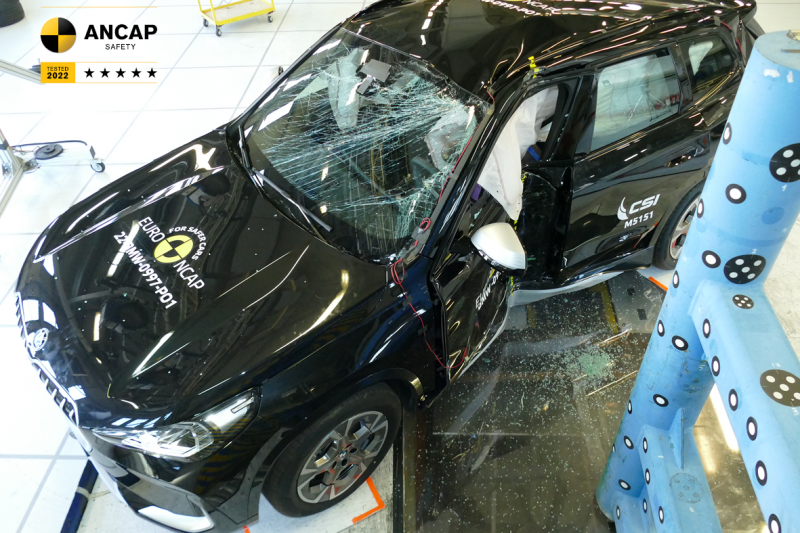
BMW X1 crash test
All Countryman variants come with the following safety equipment:
- Autonomous emergency braking (AEB)
- Blind spot monitoring
- Lane change warning
- Exit warning
- Rear cross-traffic alert
- Intelligent emergency call
- Rear collision prevention
- Front sensors
- Reversing camera
Higher-spec Classic variants add:
- Adaptive cruise control
- Parking Assistant
- Surround-view camera
- Automatic Speed Limiter
- Interior camera
- Drive recorder
How much does the Mini Countryman cost to run?
The Countryman is backed by the same five-year, unlimited-kilometre warranty offered across the Mini range.
| Mini Countryman | |
|---|---|
| Warranty | 5 years, unlimited kilometres |
| Service intervals | 12 months or 20,000km |
| 5yr service plan price | $2275 |
CarExpert’s Take on the Mini Countryman
The new Countryman is Mini at its best, taking an otherwise normal car and turning it into something a bit more special.
There’s more substance than ever behind the style too, with a more spacious interior featuring the most interesting interior technology $50,000 can buy you in Australia.
You’re still paying more for a Mini than a more mundane, more practical mid-sized SUV, but there’s enough going on here to justify the more premium price.
The Classic on test here shapes as a worthwhile upgrade over the base Core, given it brings a healthy helping of extra luxury and safety to the table.
Is the three-cylinder enough engine? If you’re spending most of your time on the school run, the answer is yes.
But if you want to make the most of the extra space on offer here and hit the highway, the extra money for the four-cylinder is money we’d be spending.
Click on the images to view the full gallery.
MORE: Buy a Mini Countryman
MORE: Everything Mini Countryman

